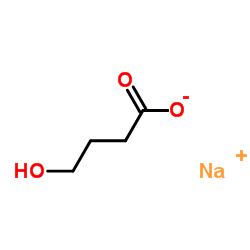[Liquid ecstasy in general psychiatry: a case series].
R W Freudenmann, E Baumgarten, A E Hawlik, M Gahr, C J Schönfeldt-Lecuona
Index: Fortschr. Neurol. Psychiatr. 81(2) , 88-94, (2013)
Full Text: HTML
Abstract
In emergency medicine and anesthaesiology liquid ecstasy (LE), the street name for GHB, GBL or 1,4-B, has become infamous for causing severe intoxications and withdrawal. In general psychiatry, however, it is little known. Therefore, we set out to gather data about the role of LE in general psychiatry, typical users and common clinical problems associated with the use of LE.We retrospectively identified and studied all patients with a reported the use of LE seen at the Department of Psychiatry, University of Ulm, Germany, between 1998 and 2011.In 14 years, 19 users of LE were identified, the first dating from 2005. The majority reported a use of GBL (63 %), GHB was less common, and 1,4-B was not reported. Patients were predominantly young men (median age 25 years, 79 % men) with a history of multiple substance abuse. Ten patients had only a former use of LE, the other nine patients used it at the time of presentation. Of these, every third patient had to be transiently treated in an intermediate care unit, usually because of very severe and sudden withdrawal symptoms. Otherwise, detoxification was possible in psychiatry, but often required high doses of benzodiazepines. Three patients met the criteria for dependence from GBL.In recent years, a small number of users of LE is seen also in general psychiatry, The problem is rather the severity of withdrawal than the number of cases. Close cooperation with intermediate care units is needed. In any case of coma of unknown origin or delirium with sudden onset LE use or withdrawal has to be taken into consideration, respectively. Many clinical problems result from the fact that LE cannot be detected in routine drug screenings. According to our experience, withdrawal from LE can be controlled with benzodiazepines.© Georg Thieme Verlag KG Stuttgart · New York.
Related Compounds
| Structure | Name/CAS No. | Molecular Formula | Articles |
|---|---|---|---|
 |
4-Hydroxybutanoic acid sodium salt
CAS:502-85-2 |
C4H8NaO3+ |
|
An improved design of water-soluble propofol prodrugs charac...
2014-04-01 [Anesth. Analg. 118(4) , 745-54, (2014)] |
|
Treatment of alcohol dependence: recent progress and reducti...
2014-12-01 [Minerva Med. 105(6) , 447-66, (2014)] |
|
Discriminative stimulus effects of the GABAB receptor-positi...
2013-03-01 [J. Pharmacol. Exp. Ther. 344(3) , 553-60, (2013)] |
|
Effects of monocarboxylate transporter inhibition on the ora...
2013-04-01 [J. Pharmacol. Exp. Ther. 345(1) , 102-10, (2013)] |
|
The clinical toxicology of γ-hydroxybutyrate, γ-butyrolacton...
2012-07-01 [Clin. Toxicol. (Phila.) 50(6) , 458-70, (2012)] |